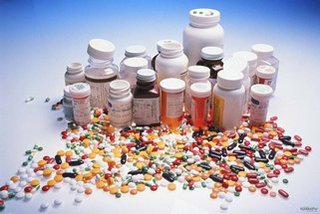The use of antibiotics in livestock is declining

The significant decline in the use of antibiotics in livestock suggests that country-level measures to reduce the use of antibiotics are effective.
According to the European Food Safety Administration (EFSA), the European Medicines Agency (EMA) and the European Center for Disease Prevention and Control (ECDC), the use of antibiotics has decreased, at the moment the level of antibiotic use in animal production is lower than in public HEALTH. Based on a One Health approach, the report presents data on antibiotic use and the development of antimicrobial resistance in Europe for 2016-2018.
The consumption of antibiotics in both sectors, expressed in mg/kg of estimated biomass, was compared both at the country level and at the pan-European level. Significant differences were observed across countries in the health and livestock sectors. Every year between 2016 and 2018 overall antibiotic consumption was lower in farm animals (e.g. 2017 108.3 mg/kg, range 3.1–423.1) than in humans (e.g. 2017 130.0 mg/kg; range 52.8–212.6). This is the first time such a situation has been reported since JIACRA began analyzing the data in 2011.
The significant reduction in the use of antibiotics in animals used for food production indicates that measures taken at country level to reduce use are proving to be effective. Use of a class of antibiotics called polymyxins, which includes colistin, was almost halved in farm animals between 2016 and 2018. This is a positive development as polymyxins are also used in hospitals to treat patients infected with multidrug-resistant bacteria.
The picture in the EU is varied - the situation differs significantly depending on the country and class of antibiotics. For example, aminopenicillins, 3rd and 4th generation cephalosporins, and quinolones (fluoroquinolones and other quinolones) are used more in humans than in farm animals, while polymyxins (colistin) and tetracyclines are used more in animals than in humans.
The report also points out links between the consumption of antimicrobials in animals and antimicrobial resistance in bacteria from food-producing animals, which in turn is associated with antimicrobial resistance in human bacteria. An example of this is Campylobacter spp. bacteria found in farm animals that cause foodborne infections in humans. The experts found a link between the resistance of these bacteria in animals and the resistance of the same bacteria in humans.
Read together with it:
- Pharmaceutical companies see a threat to EU security due to bacteria in UkraineAntibiotic-resistant superbugs have been detected in Ukrainian soldiers since the beginning of the conflict, and now they pose a threat to Europe, according to a foundation developing antibiotics.The Ukrainian conflict threatens Europe with antibiotic-resistant "superbugs," said Henry Skinner, CEO of the AMR Action Fund, which specializes in investing in antimicrobials. His article was published o...
- Роспотребнадзор подводит итоги контроля мясной продукции в Тамбовской области за 2025 годПоложительные аспекты: Не было выявлено нарушений санитарно-химических показателей, присутствия патогенных микроорганизмов, ГМО, паразитов, антибиотиков и радиационного загрязнения. Проблемные моменты: Отмечается ухудшение по физико-химическим показателям — 5,88% образцов не соответствует стандартам, по сравнению с 1,5% в 2......
- About shashlik, point of view, and dragons. An interview with Academician D.A. Baimukanov.PIONERPRODUKT.by continues its series of interviews with the eminent Kazakhstani scientist Dastanbek Asylbekovich Baimukanov , recorded by his younger brother, Syzdyk Asylbekovich Baimukanov. The first interview is titled: "A Story of Shepherds, Sheep, and Freedom . " The second interview is titled: " On Beshbarmak, Money, MEAT, Traditions, Genetics, and Selective Breeding." We remind you that num...
- The Tyumen chain of stores "Svetofor" was fined 700,000 rubles for selling meat laced with antibiotics.In April 2025, ROSSELKHOZNADZOR (Federal Service for Veterinary and Phytosanitary Surveillance) specialists conducted inspections at three stores in the chain and discovered that MEAT containing antibiotics and other veterinary drugs, as well as soy DNA, was being sold in excess of permissible levels . These products pose a HEALTH risk to consumers. Despite company representatives' arguments that ...
- New study: BCG vaccine may boost cattle immunityThe four-year project focuses on the concept of "trained immunity"—the body's ability to respond more effectively to various infections. If proven correct, this hypothesis could significantly reduce livestock farming's reliance on antibiotics , improving animal HEALTH and reducing the industry's negative environmental impact. Dr. Amanda Gibson, the study's lead author , noted, "This is a unique op...
- Tarusa Poultry Farm launches a new stage of development with support from SberbankThe factory, renowned for its organic chicken eggs, produces approximately 240,000 eggs per day, strictly adhering to sanitary and hygienic standards. High quality standards and product safety, ensured by the HACCP system, remain the company's priorities. Sberbank branch manager Maxim Volkov noted that supporting the factory is a strategic step toward regional development, creating jobs and streng...
- New law on fines for prescribing veterinary drugs in RussiaThis will be part of the strategy to combat antimicrobial resistance. The Ministry of Agriculture and ROSSELKHOZNADZOR are working on a corresponding federal law. According to the bill, fines will be established for improperly prescribing and dispensing veterinary drugs, particularly antibiotics , which will become prescription-only as of March 1, 2......
- The United States has confirmed a case of human infection with a blowfly.On August 4, the U.S. Department of HEALTH and Human Services (HHS) confirmed the first human case of MEAT myiasis.flies in the United States. The patient, a Maryland resident, recently visited El Salvador, where the plague is still actively raging. The BBC News agency initially reported the case, explaining that the parasite feeds on living tissue and primarily infects livestock, although it can ...


